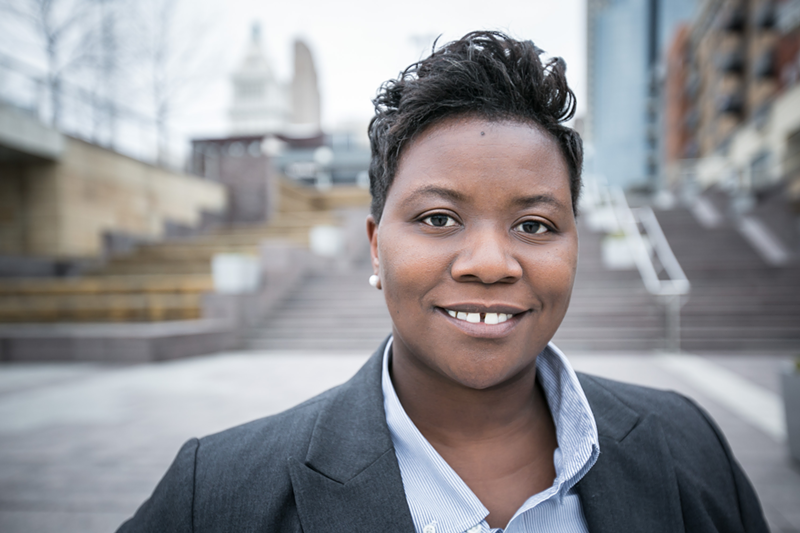Hello Cincy! We’re back with a little bit of the ole morning news.
As we reported last night, Mayor John Cranley won a decisive victory in his re-election battle with challenger Councilwoman Yvette Simpson.
On the surface, the map looked much the same as it did in the May primary for the two candidates. Simpson took precincts in the center of the city representing neighborhoods like Over-the-Rhine, Avondale, Walnut Hills and others, while Cranley took east and west side areas like Mount Lookout, Hyde Park, Price Hill and the like. But where Simpson prevailed in the May contest, beating Cranley by nearly 11 points, this time the mayor won out handily with 54 percent of the vote. The difference? Turnout. Only 10 percent of voters came out in the primary, many of them hyped on Simpson. Last night’s turnout still wasn’t great — just less than 28 percent, according to the Hamilton County Board of Elections. But many more of those who showed up at the polls or sent in early ballots were doing so for Cranley.
Trouble for Simpson’s bid started right away, when early voting results showed a big lead for Cranley and for the city’s conservative city council candidates. Conservative and moderate voters in Cranley-friendly neighborhoods turned out more on election day, too. And while Simpson picked up a couple precincts, she also left a few on the table.
You can read our full rundown of the mayor’s race — including factors that may have driven Cranley’s victory and what’s next for Simpson — right here.
• Incumbents also ruled the day in the race for Cincinnati City Council seats. Voters gave all six current council members running for reelection another four-year term. P.G. Sittenfeld was again the field’s top vote-getter, followed by fellow Democrats Vice Mayor David Mann, Chris Seelbach and Wendell Young and independent Christopher Smitherman. First-time candidates Tamaya Dennard and Greg Landsman, both Democrats, grabbed the sixth and seventh most votes, while Republicans incumbent Amy Murray and first-time candidate Jeff Pastor rounded out the top nine. Pastor’s spot is contested — he beat 10th place finisher Democrat Michelle Dillingham but just a couple hundred votes. Dillingham won’t concede until provisional ballots are counted.
• Incumbents didn’t have quite so much luck in the crowded, 13-way race for four spots on the Cincinnati Public School Board. First-time candidate Ryan Messer, former Over-the-Rhine Community Council president, grabbed the most votes in that contest. Current board president Ericka Copeland-Dansby got the second-most, followed by another newcomer, UpSpring head Mike Moroski. Incumbent Melanie Bates finished fourth, meaning she’ll probably end up with the last open seat. But that’s not a done deal — fifth place finisher Renee Hevia came within 100 votes of Bates. If provisional ballots don’t widen that margin, there may be a recount.
• Also, county and state voters had issues last night. Err, I mean, they voted on some issues last night. Levy renewals for drug addiction and mental health services (Issue 3) and health and hospital services (Issue 4) passed with roughly 70 percent of the vote, as did a slight levy increase for elderly care services (Issue 5). Sixty-six percent of CPS district voters also approved a school levy renewal. Ohio voters overwhelmingly said yes to Issue 1, a victims’ rights bill, and no to Issue 2, which sought to lower drug prices the state pays pharmaceutical companies.
• Phew. Now that the election is over, the Hamilton County Democratic Party will turn its attention to finding a replacement for outgoing chair Tim Burke, who plans to leave his post next year. Burke might stick around until next November’s mid-term elections, but after that, he'll end his 25-year tenure as party head. Who is in line to take his place? It’s not necessarily a fun or lucrative job — it doesn’t pay, and being at the head of the table means dealing with all the infighting the party has seen over the past few years as progressives look to have more say and more candidates in the county. Former state Sen. Eric Kerney, now chair of the African American Chamber of Commerce; Jared Kamrass, an attorney and Democratic party operative; and Anne Sesler, a co-chair of the Hamilton County Democratic Committee, all might be in the running for the gig. It’s a pivotal time for the party, which picked up control of the Hamilton County Commission last year amid a swing slightly left in the county.
• Meanwhile, progressives and Democrats in races across the country won victories in races that looked like conservative strongholds. Philadelphia voters elected a new district attorney, Larry Krasner, who has made his name as a civil rights attorney and who calls the idea of “strong-men prosecutors” fascist. Democrats Ralph Northam and Phil Murphy scooped up the governor’s seats in Virginia and New Jersey, respectively. Danica Roen became the second openly transgender woman elected in a U.S. State House when she beat staunchly conservative Bob Marshall — who was responsible for an anti-transgender bathroom bill — for his northern Virginia district. Massachusetts State Rep. Althea Garrison was the first in 1992, though she did not campaign as transgender as Roen did. In another Virginia House of Delegates race, a Marine veteran named Lee Carter running as a Democratic Socialist ousted the state House’s GOP whip by a decisive nine points. A few other openly socialist candidates also prevailed in local and state races around the country. Are these extreme swings a sign that Democrats — and those further left — will sweep into the U.S. House in 2018 in response to President Donald Trump? Some progressives think so. But that’s a year from now, and in the meantime, there are places like this.


